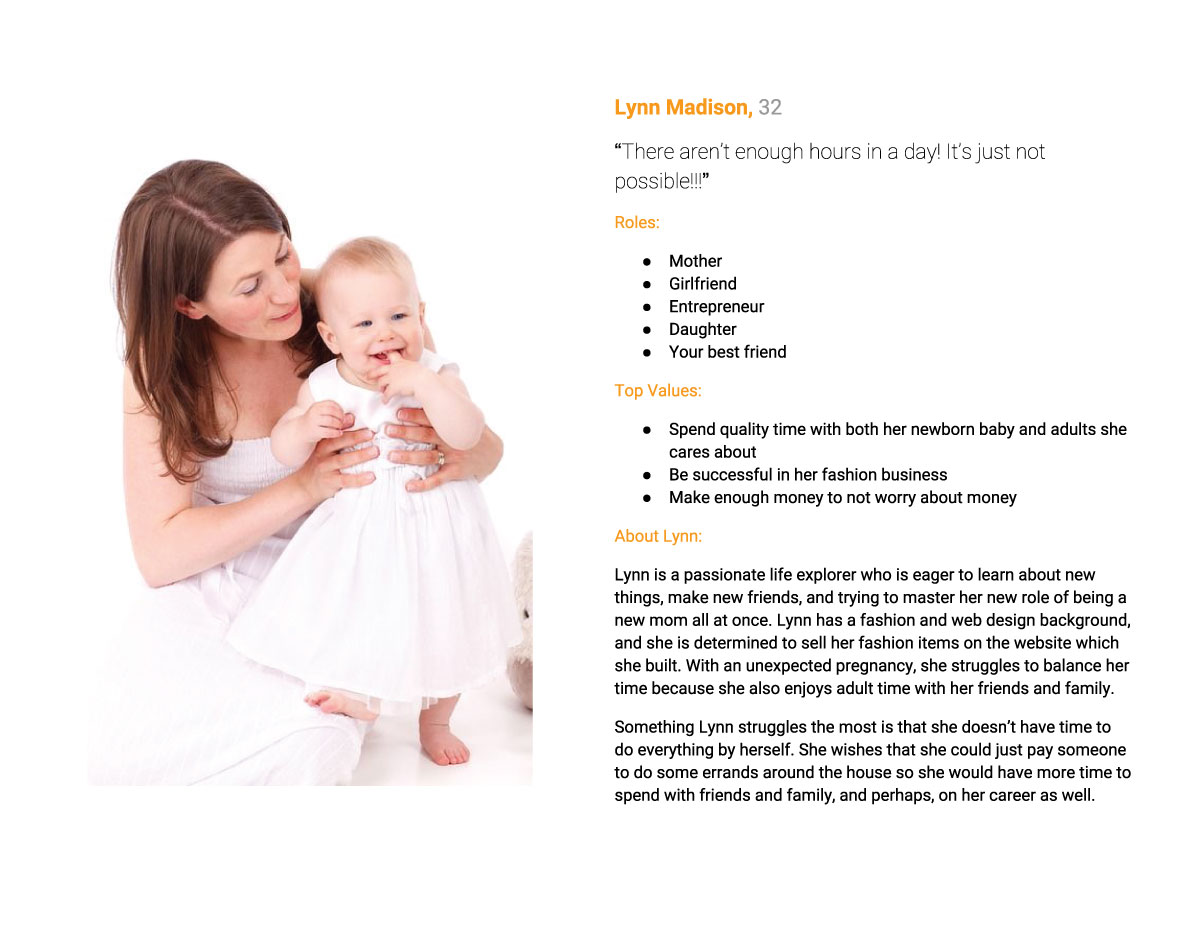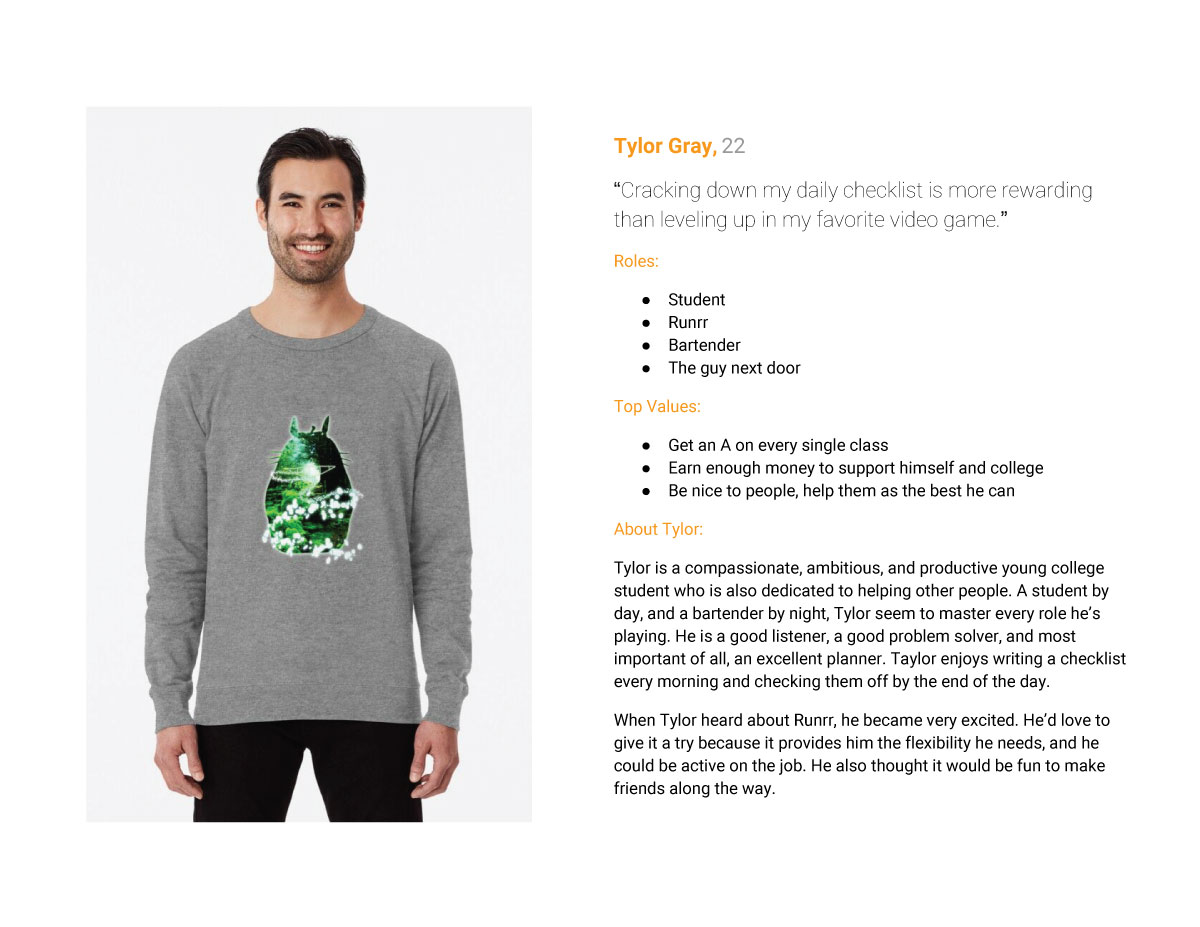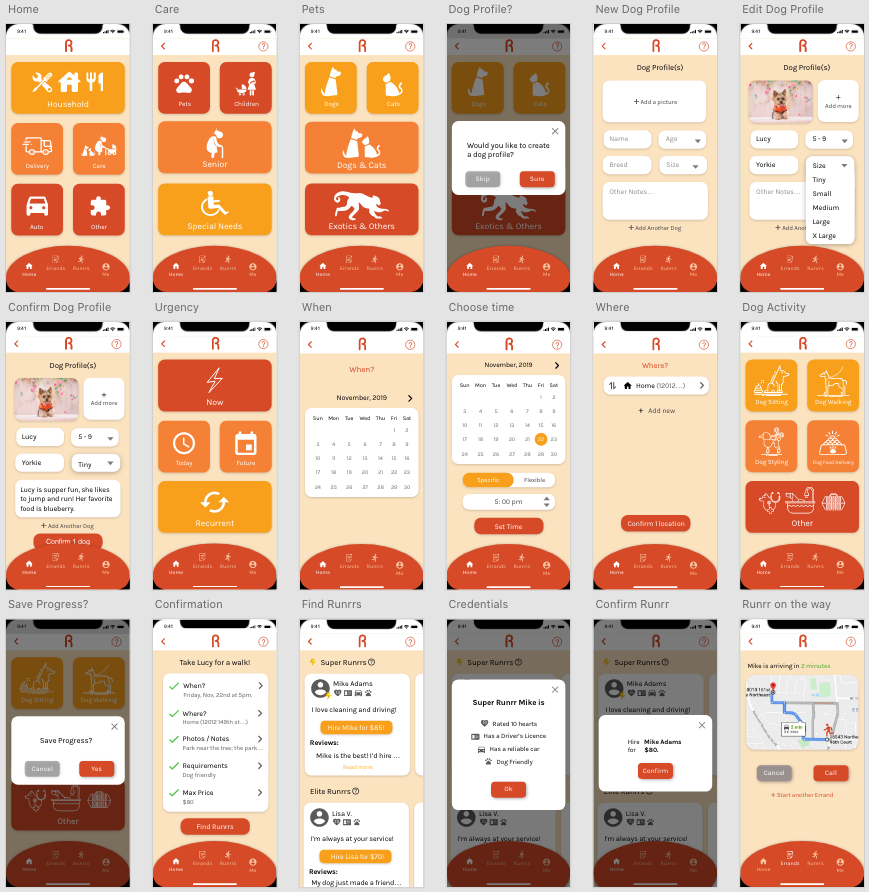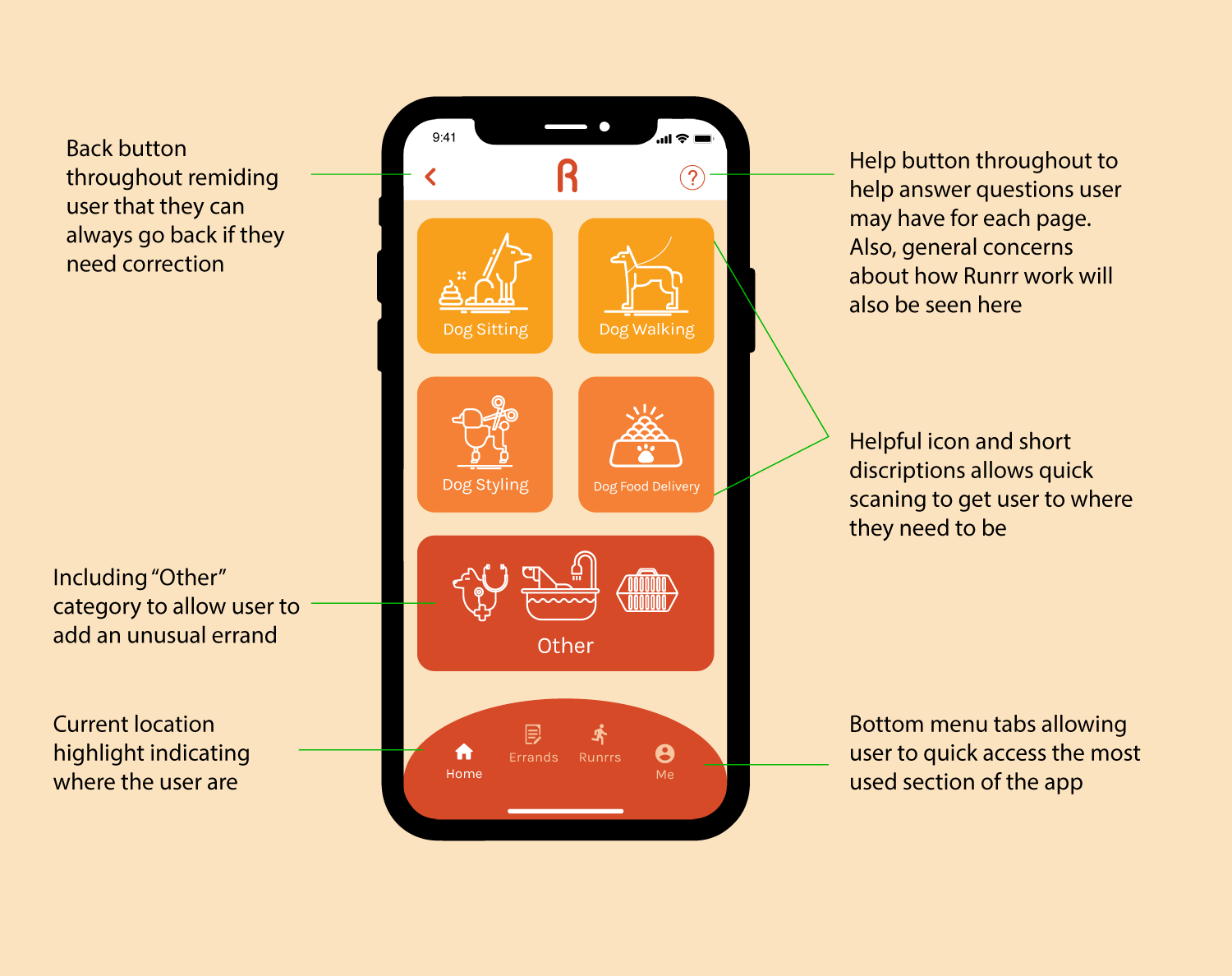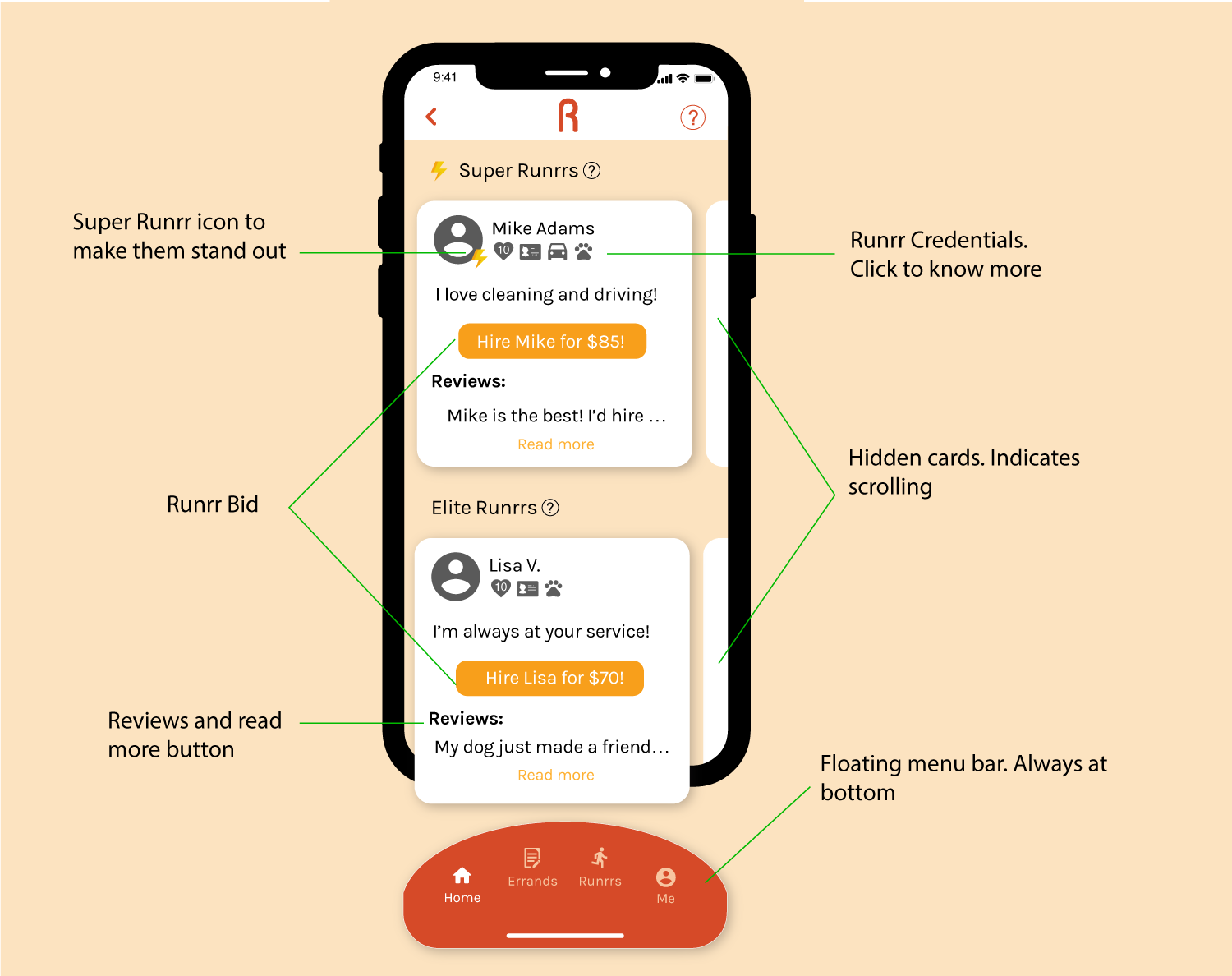Runrr
Hire someone to get your chores done, as EASY as getting a UBER.
School: LWtech | Professor: Benjamin Meyer | Type: App Interface | Role: Lead UX Designer of 3
Hire someone to get your chores done, as EASY as getting a UBER.
School: LWtech | Professor: Benjamin Meyer | Type: App Interface | Role: Lead UX Designer of 3
Hire someone to get your chores done, as EASY as getting a UBER.
School: LWtech | Professor: Benjamin Meyer | Type: App Interface | Role: Lead UX Designer of 3
In today’s world, people are busier than ever, which makes it harder to get everyday tasks done.
How do you find time to hire somebody you trust? Wouldn’t it be nice to have someone to clean your dishes, walk your dog, or pick up your groceries as easy as getting an Uber?
We designed an app that matches gig seekers (Runrr) and customers based on their location, availability, certification, and preferences. The app features on-demand mobile service by filtering down the type of chores and matches with the best candidate. The two-way rating and certification system keeps both parties safe and rest assured.
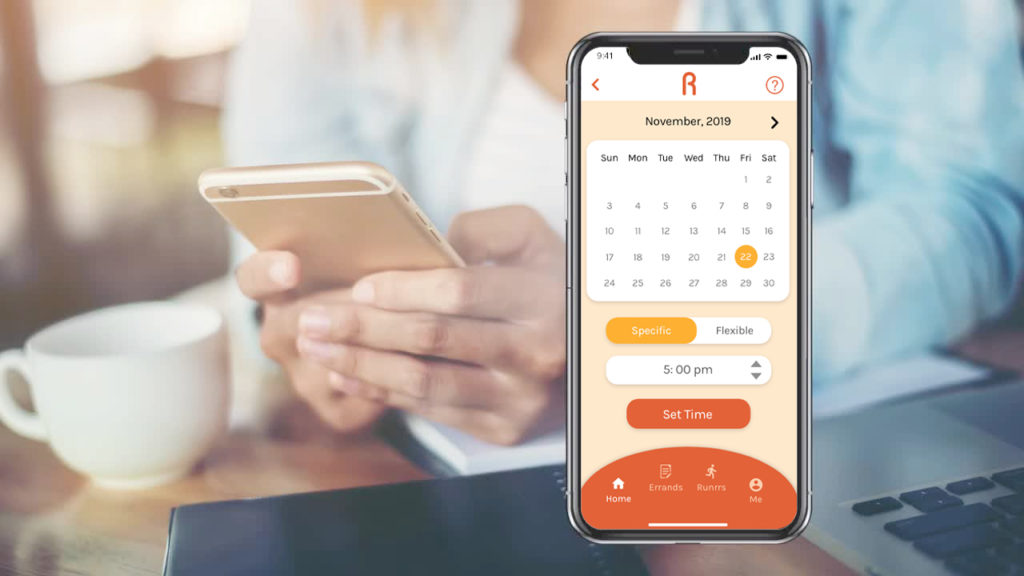
To find out if our service is on-demand and how people like them to be done, we conducted this Quantitative survey (Based on 15 responses) to lead our final prototype.
Have you used any of the service apps below? Select all that apply:
Which app do you use the most?
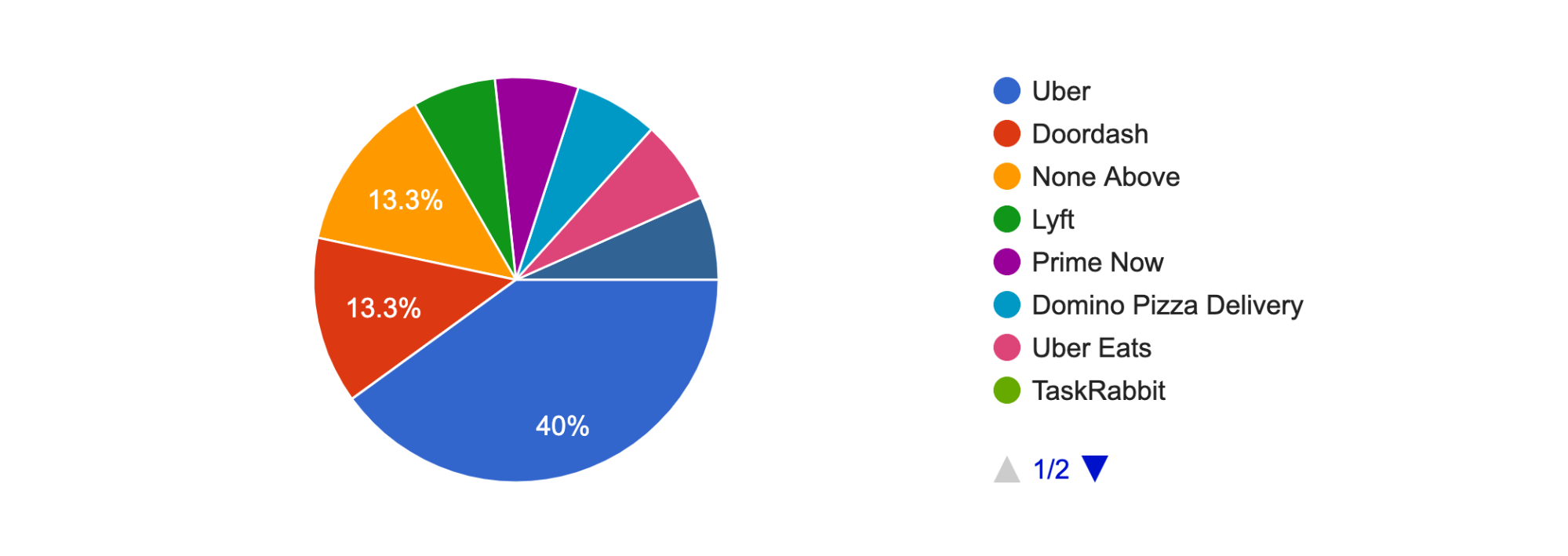


Assuming that there’s an app called Runrr, and Runrr offers to do errands for you. Just like Uber and Lyft, but instead of only giving rides, our Runrr would come to you and do your laundry, wash your dishes, walk your dogs, or any other task.
Would you use the Runrr app?
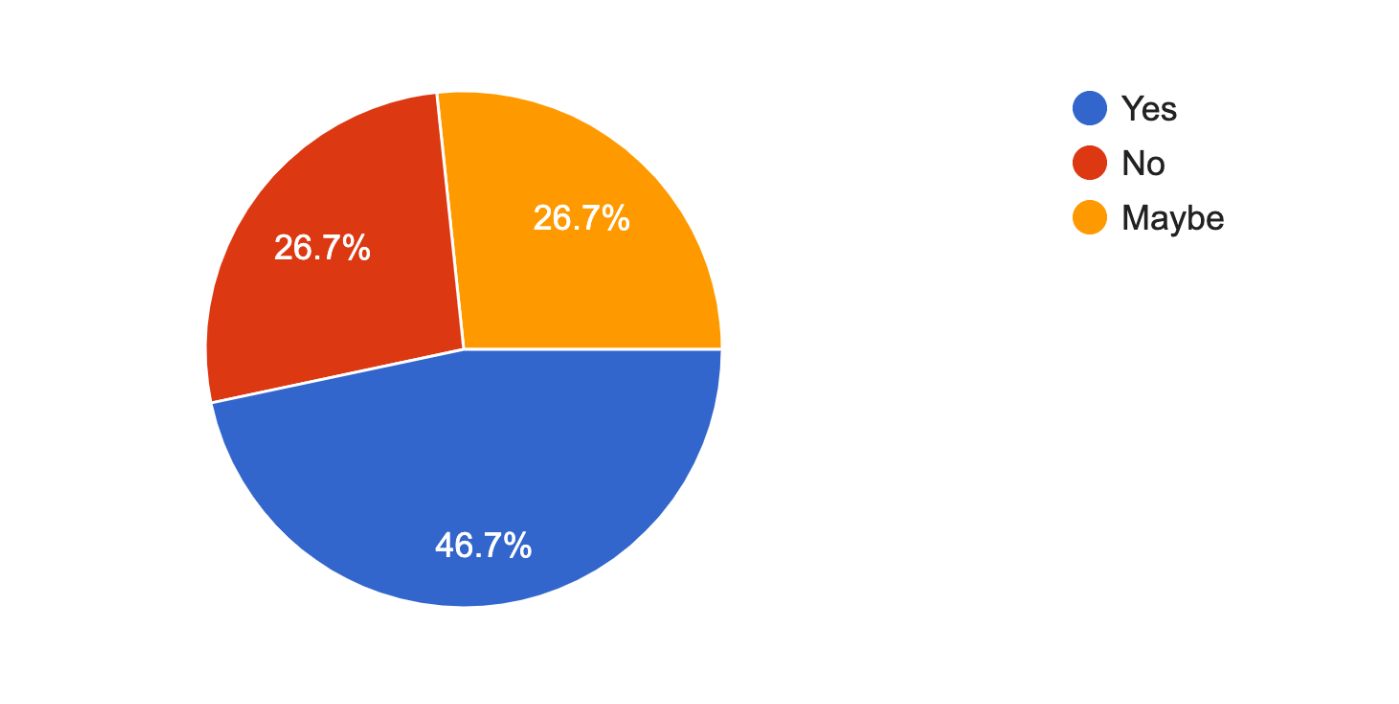
How comfortable are you to have a trained and background checked Runrr to come into your house and service you? 1 being not at all, 5 being very.
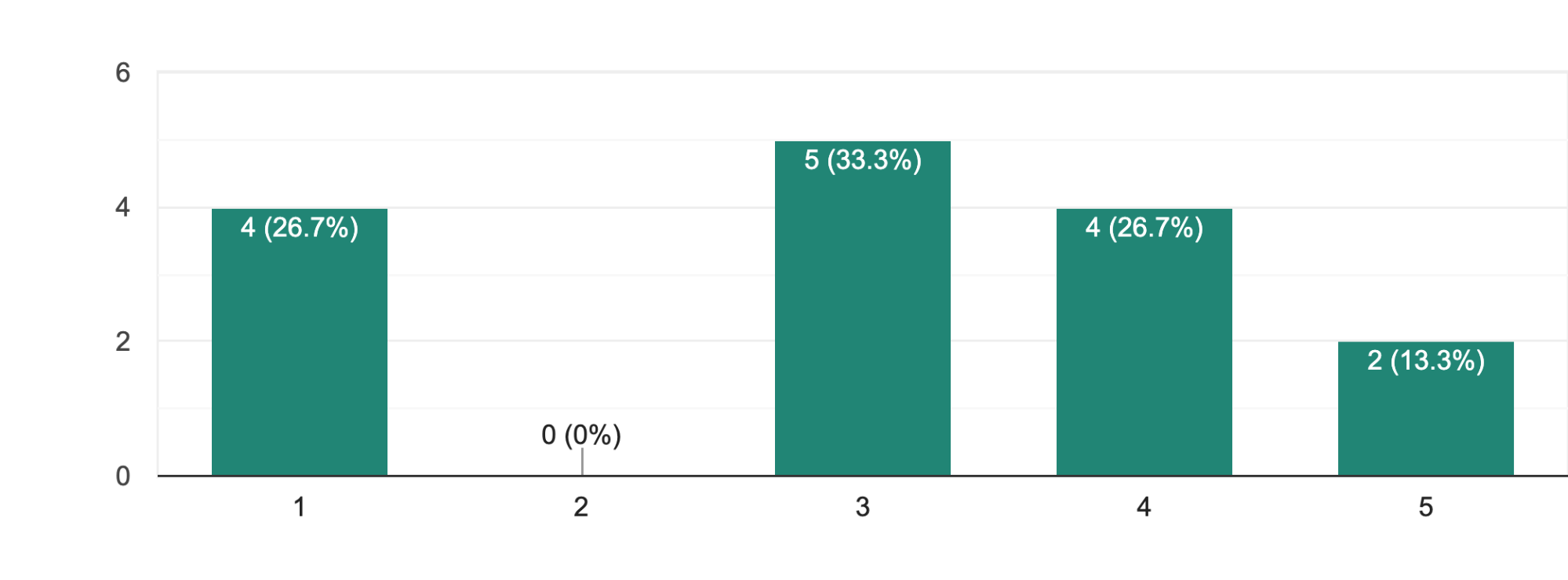




It was kind of expected but still surprising to see that most of the answers we got are about Uber. Uber was the most used and favorite of nearly half of the participants because of its convenience, and it’s always available when needed. From other participants’ answers, we also learned that people choose a particular app like Netflix because of its user friendliness. Some, would favor an app like All trails because they needed it’s functionality.
When it comes to least favorite apps, almost all apps was mentioned except uber, lyft and Prime Now. People are bothered because of bad user interface, usability and limited availability. This was expected. It’s difficult to get a detailed answer out of an online survey.
From this survey, we are glad to hear that most people would user Runrr, and are somewhat comfortable to have trained Runrr to come into their houses to service them. When it comes to bidding price vs. set price, people would like to keep both options open, and favors bidding price. This means that there are concerns about money. And this leads to my next question which surprised me a bit. People would rather have a list than having the system automatically matching them with someone. This is great to know because it makes our vision more clear of what the app would do. Another surprise is that when it comes to cat/dog friendliness, children and senior profiles, over 60% of people would have no problem displaying these info.

Andria has a degree in both fashion and web design. She’s a brand new mom and entrepreneur who also likes socializing with friends. Being her friend, Gloria knows how passionate Andria is towards her dreams and everything else she wants to do in her life, but her time is very limited as she has to play so many roles. Gloria decided to recruit Andria because she knows that she needs an app like Runrr to free her hands from running errands. She wants to be more productive in building her career and spending more time with her friends and family.
Juan is a millennial demographic that needs to be targeted. He is interested in technology also, it’s the type of cater audience that could potentially be interested in this service. Affluent, young, and open to new ideas and outsourcing tasks. We have basically approached the potential subjects by asking them if they would be interested in a concierge service/outsource tasked based application service.
She was excited about Runrr. She said that if she has this app, she would mainly use it to do grocery shopping and washing dishes. Andria is willing to pay around minimum wage and she’s not concerned with safety as long as there’s a background check for all Runrrs. For certain tasks like coming into one’s home, it would be great to meet in person first. She also pointed out that she would expect Runrr to train the Runrrs with basic guidelines, for example an etiquette course and customer interaction training. She thinks bidding price is a great idea for some tasks, since some of them might take more time than others, she also thinks that keeping the option of having a set price is also a good idea. Andria first thought having the app to match her with the best Runrr is what she wanted, but after she understood the app structure better, she’d rather see a list of Runrrs with their bidding prices. Lastly, she thinks that feedback is very important and she’d be actively providing feedback.
We found a lot of useful information from these interviews that made us come up with a graph like this. It sums up what we imagine how the app works. This graph will improve as the project develops.
It’s important to have a rating system, maybe a profile for everyone.
Our service needs to be affordable for people to be open to more everyday tasks.
Having a “meet and greet” option for customers.
Having a choice of requesting the same Runrr for different tasks.
Perhaps, in the beginning, no one with criminal records could be Runrrs.

Let’s use TaskRabbit for our test. Assuming you need some help with errands around the house. Let’s say that you have a cat and a toddler.

When Josh is trying to find a tasker, he forgot to input what particular task he wanted the tasker to do because there are no prompt on the interface. He was also not clear when he tries to choose the time. When he sees the screen of all the available taskers, he liked that there was a banner that says “All our taskers are ID and background checked”. However, when he clicks on it, the information was about how the app works.
The main problems people have with TaskRabbit are the categorising and missing a prompt of the task details. The other problem is its interface: the home page does not have enough hierarchy and the contrast isn’t enough to make important things stands out; the font sizes are too small for a mobile devices. Lastly, the app does not seem to deliver a safe environment when the user click to see how people are id and background checked.
Survey: It’s a learning opportunity for me because I realized that when I ask a question online, people do not like to type if they don’t have to. I was afraid of making people read too much instead of giving me information, but if people don’t understand what I’m asking for, they would just give me useless information. It’s important in the next round to be as specific as possible, and try to get them to care, engage and talk more.
Interview: This was the first interview we conducted, and therefore we did not have anything concrete to ask our participants. After the first round, we decided to improve our questions and draw a graph that will help explain how we imagine the app would work. And that helped people visualize our vision and help giving opinions and sharing concerns. Since this is a face to face interview, we were able to clarify and asking probing questions, which is a great advantage than online survey.
Contextual Inquiry: This was a bit more challenging because we don’t have a good enough competitor app to test with. TaskRabbit was not a good example and therefore there were a lot of distractions. It did give us some good insight to not to do something like a task name is a must and don’t skip prioritizing and categorizing tasks. This is a great chance to see how people interact with an application, so we can improve our designs in the future.
Conclusion: Overall, we were able to find a lot of solid information that would help us start the project. I feel more clear than before about what we are going to do.
